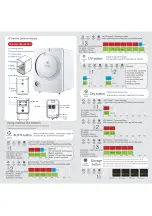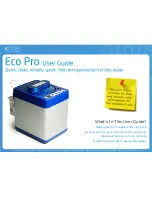
TM0497-2002
NACE International
25
________________________________________________________________________
Appendix C: Using Coupons to Determine Adequacy of Cathodic Protection
C1 Coupons have been used judiciously, particularly when
accompanied by other engineering tools and data, to
evaluate whether cathodic protection at a test site complies
with a given criterion. See NACE Publication 35201
4
for
more information on coupon use.
The following test
procedures are suggested as guides.
C2 Cathodic Protection Coupon Test Method 1—for
Negative 850 mV Polarized Pipe-to-Electrolyte Potential of
Steel and Cast Iron Piping
C2.1 Scope
This method uses a cathodic protection coupon to
assess the adequacy of cathodic protection on a steel
or cast iron pipeline according to the criterion stated in
NACE Standard RP0169,
1
Paragraph 6.2.2.1.2:
A negative polarized potential of at least 850 mV
relative to a saturated copper/copper sulfate
reference electrode (CSE).
C2.2 General
C2.2.1 This method uses a coupon to assess the
adequacy of cathodic protection applied to a
selected test site. A cathodic protection coupon is
a metal sample representing the pipeline at the
test site and used for cathodic protection testing.
The coupon should be:
(a)
Nominally of the same metal and surface
condition as the pipe;
(b)
Small to avoid excessive current drain on
the cathodic protection system;
(c)
Placed at pipe depth in the same backfill as
the pipe;
(d)
Prepared with all mill scale and foreign
materials removed from the surface; and
(e)
Placed at a known location of an ineffective
coating when the line is coated.
C2.2.2 A coupon has an insulated test lead
brought
above
ground
and,
during
normal
operations, connected to a pipeline test lead. The
coupon receives cathodic protection current and
represents the pipeline at the test site. For testing
purposes, this connection is opened, and the
polarized potential of the coupon is measured.
The time the connection is open to measure the
coupon’s “off” potential should be minimized to
avoid significant depolarization of the coupon. The
“off” period is typically less than 3 seconds. When
possible, coupon current direction and magnitude
should be verified, using a current clip gauge or
resistor permanently placed in series with the
coupon lead. Measurements showing discharge
of current from the coupon should be reason to
question the validity of using a coupon at the test
site.
C2.2.3 The significance of voltage drops due to
currents from other sources may not be a problem
when a coupon is used to represent the pipeline.
The coupon’s small size may reduce the effect of
these voltage drops.
The magnitude of these
voltage drops can be quantified by interrupting
cathodic protection current sources while the
coupon is disconnected and noting whether there
is a shift in the coupon-to-electrolyte potential.
C2.3 Comparison with Other Methods
C2.3.1 Advantages
(a)
Can
provide
a
polarized
coupon-to-
electrolyte potential, free of voltage drop, with a
minimum of specialized equipment, personnel,
and vehicles; and
(b)
Can
provide
a
more
comprehensive
evaluation of the polarization at the test site than
conventional
pipe-to-electrolyte
potential
measurements that may be influenced by the
location, size, and number of coating holidays
when the pipeline is coated.
C2.3.2 Disadvantage—Can have high initial costs
to install coupons, especially for existing pipelines.
C2.4 Basic Test Equipment
C2.4.1 Voltmeter with adequate input impedance.
Commonly
used
digital
instruments
have
a
nominal impedance of 10 megaohms. An analog
instrument with an internal resistance of 100,000
ohms per volt may be adequate in certain
circumstances in which the circuit resistance is
low. A potentiometer circuit may be necessary in
other instances.
C2.4.2 Two color-coded meter leads with clips for
connection to the coupon and reference electrode.
C2.4.3 Reference electrode
C2.4.3.1
CSE
C2.4.3.2
Other
standard
reference
electrodes may be substituted for the CSE.
These reference electrodes are described in
Appendix A, Paragraph A2.
C2.5 Procedure
Содержание CP 1
Страница 1: ...CP 1 Cathodic Protection Tester Course Manual February 2005 NACE International 2000 ...
Страница 265: ......
Страница 266: ......
Страница 267: ......
Страница 268: ......
Страница 301: ...RP0169 2002 32 NACE International ISBN 1 57590 035 1 ...
Страница 535: ...TM0101 2001 24 NACE International ISBN 1 57590 137 4 ...
















































